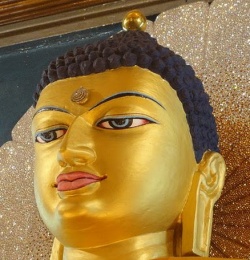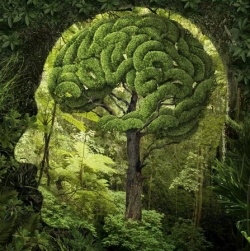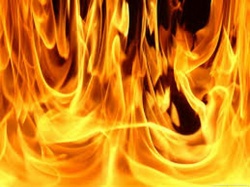Imperial Preceptor
Imperial Preceptor: di shi 帝師, Tib. ti shri
A government post created during the reign of the Mi nyag/Xixia emperor Renzong (r. 1139-1193), probably in the 1170s. The first known Imperial Preceptor was Boluo xiansheng 波囉顯勝, who may have been a Tibetan. In terms of his rank, his other title was the equivalent to that of an imperial prince. This tendency to treat high-ranking monks as the equals of royalty continued into the Qing dynasty. By the late 12th century, Tibetans appear to have served in this post. The Central Tibetan [[Gtsang po pa Dkon mchog[seng ge]] and his student 'Gro mgon Ti shri ras pa were probably the last Imperial Preceptors. The responsibilities of this post included first, serving as the emperor's chaplain, teacher and consecrator and, more generally, teaching, writing, translating and editing. For instance, the Imperial Preceptor oversaw the Mi nyag revisions of the Tangut and Chinese Buddhist canons.
In the Yuan dynasty, this post was continued, but with an added responsibility of overseeing the political situation in Central Tibet. 'Phags pa was a State Preceptor (guoshi) from 1260-1270, and then became the first Mongol Imperial Preceptor in 1270. They continued to have important religious roles at the court. 'Phags pa in particular wrote a large number of texts for the benefit and training of the imperial family, especially Qubilai Khan's chosen heir Jingim (who died before he could take power). To provide the imperial family with ready service, their official residence (Me tog ra ba) was within the precincts of the imperial palace.
However, their role was broader than merely serving the imperial family. The Imperial Preceptors had more political responsibilities (for Tibet) than they had in the Mi nyag dynastic period. For instance, they would issue decrees, under the emperor's authority to both protect and command monasteries in Tibet. Moreover, they directed all Buddhist establishments in the Yuan empire and were charged with promoting Buddhism in the empire. They oversaw routine Buddhist ceremonies and special rituals upon the enthronement and funerals of the emperors. They held rituals and dedicated stupas to the protection of the state and its subjects, in general terms or in specific instances, such as to prevent flooding. During the preceptorship (1327-1329) of Kun dga' legs pa'i 'byung nas rgyal mtshan dpal bzang po, officials concerned about the expenses of Buddhist ceremonies successfully petitioned the emperor to abolish the Du gongde shi (central office in charge of Buddhist affairs). The elimination of this office temporarily reduced the power of the imperial preceptor, though the office was restored sometime between 1333-1358 when Kun dga' rgyal mtshan dpal bzang po was the Imperial Preceptor.
List of Imperial Preceptors in the Yuan Dynasty*
1270-1273 1) 'Phags pa
1273-1279/1282 2) Rin chen rgyal mtshan (1235-1279/1282), 'Phags pa's younger step-brother, came to Beijing in 1269 with 'Phags pa
1282-1286 3) Dharmapâla rakshîta (1268-1287), 'Phags pa's nephew
1286-1294 4) Ye shes rin chen (1248-1294), 'Phags pa's disciple
1294-1303 5) Grags pa 'od zer (1246-1303), 'Phags pa's disciple
1304-1305 6) Rin chen rgyal mtshan]] (1258-1305), 'Phags pa's disciple
1305-1314 7) Sang rgyas dpal (1267-1314), Grags pa 'od zer's nephew
[c. 1312] Sga A gnyan Dam pa Kun dga' dgrags (1230-1303), 'Phags pa's disciple, was posthumously declared [[Imperial [Preceptor]]
1315-1327 8) [[Kun dga' blo gros rgyal mtshan dpal bzang po\\ (1299-1327), Sa skya 'Khon family member
1322/1323-1325 9) Dbang phyugs rgyal mtshan (?-1325), concurrent and acting Imperial Preceptor, while Kun dga' blo gros rgyal mtshan dpal bzang po was in Tibet
1327-1329 10) Kun dga' legs pa'i 'byung nas rgyal mtshan dpal bzang po (1308-1329), Sa skya family member
1329 11) Rin chen grags bkra? shis, also appointed as Tai situ (Great Minister of Education)
1333-1358 12) Kun dga' rgyal mtshan dpal bzang po (1310-1358), stepbrother of Kun dga' blo gros rgyal mtshan dpal bzang po, Sa skya 'Khon family member
1361-1362 13) Bsod names blo gros rgyal mtshan (1332-1362), grand-nephew of 'Phags pa
c. 1368 14) Rnam rgyal dpal bzang po, Imperial Preceptor at end of Yuan rule of China; sent emissary to Ming Court in 1372
- Of these, only three (#9, 11, 14) do not have clear connection to 'Phags pa as either related family members or direct disciples.
Sources:
Ruth Dunnel. The Hsia Origins of the Yüan Institution of Imperial Preceptor. Asia Major. Third Series, Vol. 5, part 1, 1992, pp. 85-111.
Elliot Sperling, Rtsa-mi lo-tsa-ba Sangs-rgyas Grags-pa and the Tangut background to early Mongol-Tibetan relations," PIATS6 Oslo, 801-824 & “‘Lama to the King of Hsia’” The Journal of the Tibet Society, vol. 7, 1987, pp. 31-50.
Herbert Franke.1978. From tribal chieftain to universal emperor and god: the legitimation of the Yuan dynasty, Sitzungsberichte - Bayerische Akademie der Wissenschaften, Philosophisch-Historische Klasse. Munchen: Verlag der Bayerischen Akademie der Wissenschaften. Focus on pp. 52-79.
Rinchen trashi. “Tibetan Buddhism and the Yuan Royal Court.” Tibet Studies. 1-26.
Wang Yao and Chen Qingying. Xizang lishi wenhua cidian/ Bod kyi lo rgyus rig gnas tsig mdzod. Xizang renmin chubanshe/Zhejiang renmin chubanshe, 1998, pp. 66-67. Listing of imperial preceptors.
Luciano Petech. 1980. Sang-ko, a Tibetan statesman in Yüan China. Acta Orientalia Academiae Scientarium Hungaricae 34:193-208.
Entry by Gray Tuttle 1/29/07



